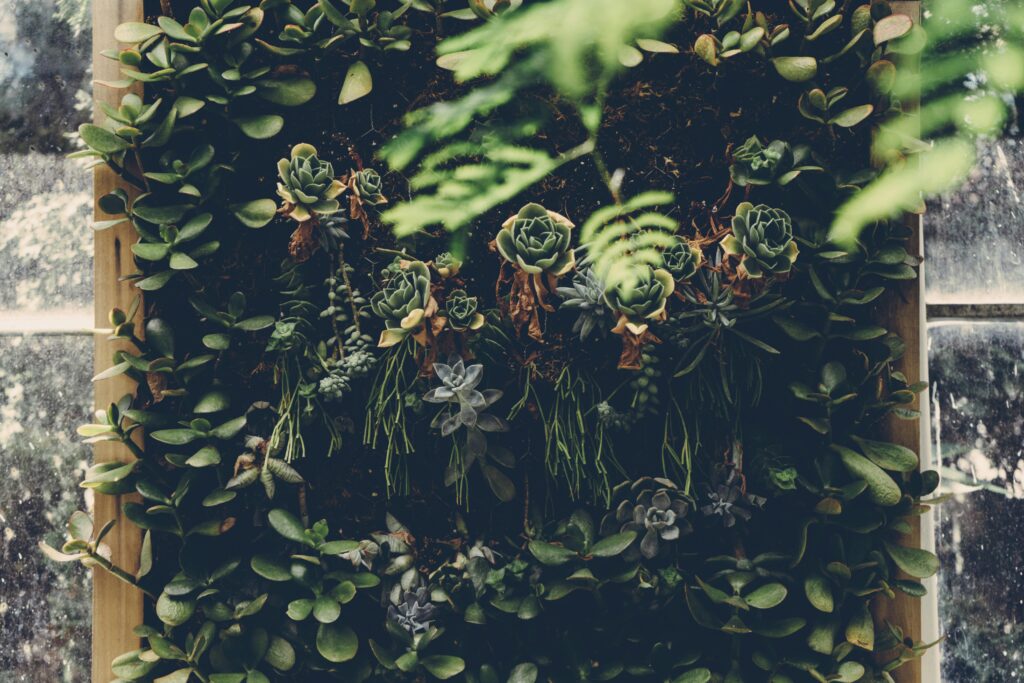What Is a Green Home?
A green home is designed and maintained to minimize environmental impact while promoting a healthier lifestyle. It uses energy efficiently, conserves water, reduces waste, and prioritizes natural, non-toxic materials. The goal is to create a living space that’s good for both people and the planet.
You don’t need to rebuild your house from scratch — a few mindful upgrades and habit changes can make your home significantly more eco-friendly.
Benefits of Living in a Green Home
- Lower energy bills: Energy-efficient lighting and insulation reduce electricity costs.
- Better health: Non-toxic materials and improved air quality reduce allergies and respiratory issues.
- Less waste: Reusing, recycling, and composting help cut down landfill waste.
- Long-term savings: Sustainable design and durable materials last longer.
- Smaller carbon footprint: Green homes reduce greenhouse gas emissions.
Energy-Saving Ideas for a Green Home
Energy efficiency is the foundation of an eco-friendly home. Small changes can dramatically reduce your electricity use and monthly bills.
Practical energy-saving tips:
- Replace incandescent bulbs with LED or CFL lights.
- Install solar panels or consider a solar water heater.
- Use energy-efficient appliances (look for the Energy Star label).
- Unplug chargers and devices when not in use.
- Add insulation to walls and windows to maintain indoor temperature.
- Use smart thermostats to regulate energy automatically.
These steps not only reduce energy consumption but also improve comfort and increase your property’s value.
Sustainable Materials & Furniture Choices
Choosing the right materials for furniture and decor makes a big difference. Sustainable materials are renewable, recyclable, and often locally sourced.
- Opt for bamboo, reclaimed wood, or rattan furniture.
- Avoid toxic paints — use low-VOC or natural paints.
- Choose organic fabrics such as cotton, linen, or hemp.
- Repurpose or upcycle old furniture instead of buying new.
Minimalist design with sustainable materials creates an aesthetic, functional, and responsible home environment.
How to Save Water at Home
Freshwater is one of the most precious resources. A green home focuses on conserving it effectively.
- Fix leaks and dripping taps immediately.
- Install low-flow showerheads and dual-flush toilets.
- Collect rainwater for gardening.
- Use greywater systems to recycle bath or laundry water.
- Water plants early morning or late evening to reduce evaporation.
Reducing Waste for a Zero-Waste Home
Waste reduction is central to sustainable living. A green home follows the 5R principle: Refuse, Reduce, Reuse, Recycle, and Rot.
- Refuse what you don’t need — say no to single-use plastics.
- Reduce consumption — buy less and choose quality over quantity.
- Reuse jars, bags, and containers.
- Recycle paper, glass, and metal responsibly.
- Rot organic waste through composting.
Start small by setting up a compost bin and switching to reusable grocery bags. Over time, these actions drastically reduce your household waste output.
Improve Indoor Air Quality Naturally
Indoor air can be more polluted than outdoor air due to synthetic cleaners and poor ventilation. Try these natural ways to purify your home environment:
- Add indoor plants like peace lily, snake plant, or spider plant — natural air purifiers.
- Use essential oil diffusers instead of artificial air fresheners.
- Keep windows open daily for ventilation.
- Switch to natural cleaning ingredients such as vinegar and baking soda.
Green Home Renovation & Design Tips
Planning a home renovation? You can make it eco-friendly without overspending.
- Choose locally made and sustainable materials.
- Use recycled tiles, reclaimed wood, and eco-friendly cement.
- Install energy-efficient windows for better insulation.
- Use light colors for walls to reflect natural light.
- Incorporate natural lighting and ventilation in design.
Green architecture isn’t just trendy — it’s a long-term investment in your family’s health and the planet’s future.
Smart Tech for Sustainable Homes
Technology can make your green home even smarter. Many devices now help track and reduce energy use.
- Install smart thermostats to adjust temperatures automatically.
- Use motion-sensor lights to save electricity.
- Monitor power use with smart plugs.
- Try water-saving sensors for gardens and bathrooms.
Smart homes are no longer luxury — they’re the future of sustainability.
FAQs About Green Homes
1. What makes a home eco-friendly?
Eco-friendly homes use renewable energy, minimize waste, use sustainable materials, and promote natural ventilation and light.
2. Are green homes expensive to build?
Initial costs can be slightly higher, but long-term savings on energy, water, and maintenance make them more affordable over time.
3. Can an apartment be a green home?
Absolutely. You can conserve energy, use eco products, compost, and reduce plastic waste even in small spaces.
4. What are the key features of a sustainable house?
Solar power, insulation, rainwater harvesting, sustainable materials, and natural ventilation are major features of green homes.
5. How can I start making my home greener today?
Start by switching off unused lights, avoiding plastic, recycling, and adding indoor plants — small steps lead to big results.
Conclusion: Build Your Green Home One Step at a Time
Creating a green home is not about perfection — it’s about progress. Each eco-conscious decision, no matter how small, helps build a more sustainable planet. From reducing waste to conserving energy, these changes improve your well-being and future generations’ quality of life.
Start with what feels doable today: switch to LEDs, add plants, compost kitchen scraps, or unplug devices. A greener home begins with your daily choices.



